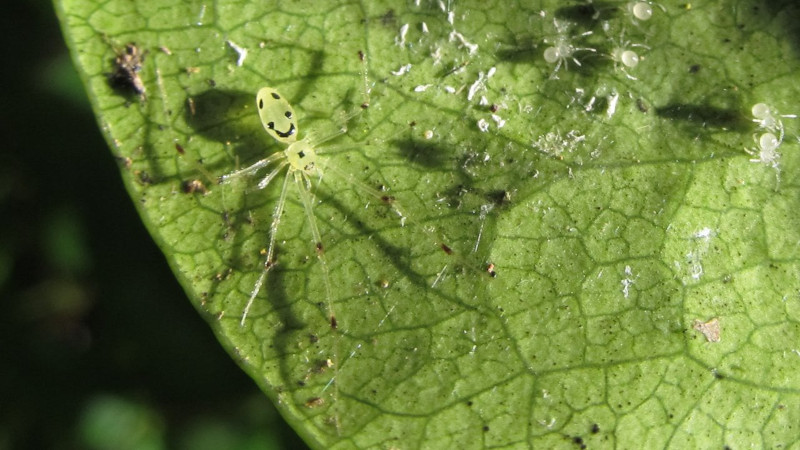Happy Face Spider Facts
- Firstly, Happy Face Spider serves as the common English name for the Theridion grallator. In the native Hawaiian language, it is called the nananana makaki’i, which translates literally as face-painted spider.
- But, the precise evolutionary purpose of this particular pattern remains unknown. Scientists theorize that it may serve as camouflage for the arachnid, given its tropical habitat.
- Fortunately for arachnophobes, however, the Happy Face Spider is actually rather minuscule in size.
- Finally, like so many others, it now faces the threat of extinction. Its primary threats consist of a combination of habitat loss and the highly restricted nature of its endemic range.
Related Articles
Happy Face Spider Physical Description
Most notably, the Happy Face Spider obviously derives its common name from markings on its back. That’s because it is most unusual, but distinctive. A pattern resembling an exaggerated smiling human face appears on its backs.
Remarkably, its tiny body is also almost translucent. However, in color, individuals typically show a mildly bright yellow. But some specimens also display small red spots at the various joints of the legs.
Further, the average leg span is only 0.2 in (5 mm), which certainly qualifies as tiny, indeed. In addition, the genders of this fascinating invertebrate display no discernible degree of sexual dimorphism
Additionally, the species has extremely short fangs. This fact, therefore, makes it unlikely that these can even penetrate human skin. Finally, the legs, especially the front two, remain highly elongated and surprisingly thin.
- Kingdom: Animalia
- Phylum: Arthropoda
- Class: Arachnida
- Order: Araneae
- Family: Theridiidae
- Genus: Theridion
- Species: T. grallator
Happy Face Spider Distribution, Habitat, and Ecology
Quite sadly, the unusually marked Happy Face Spider has a highly restricted area endemic range. That’s because it only lives on four of the Hawaiian Islands. Further, no evidence exists of it ever living anywhere else.
Yet even within that range, it has a highly specific habitat preference. Due to this fact, it typically inhabits the rainforest regions. It also only lives at altitudes ranging between 980-6,560 ft (300-2,000 m) above sea level.
Additionally, even there it most commonly lives beneath leaves on the rainforest floor. There it occasionally spins a tiny web to catch its prey. But, more typically, it hides beneath the leaves and acts as an ambush predator.
Furthermore, the prey principally consists of various tiny native insect species. Meanwhile, its own predators consist of the usual for many related species. This mostly includes the various birds endemic to the region.
Species Sharing Its Range
Check out our other articles on 7 Unbelievable Amphibians, Galapagos Penguin, Ambrym Island, Monkey Puzzle Tree, Kemps Ridley Sea Turtle, Hines Emerald Dragonfly

